While you were in quarantine, a major new art museum rose in Orange County
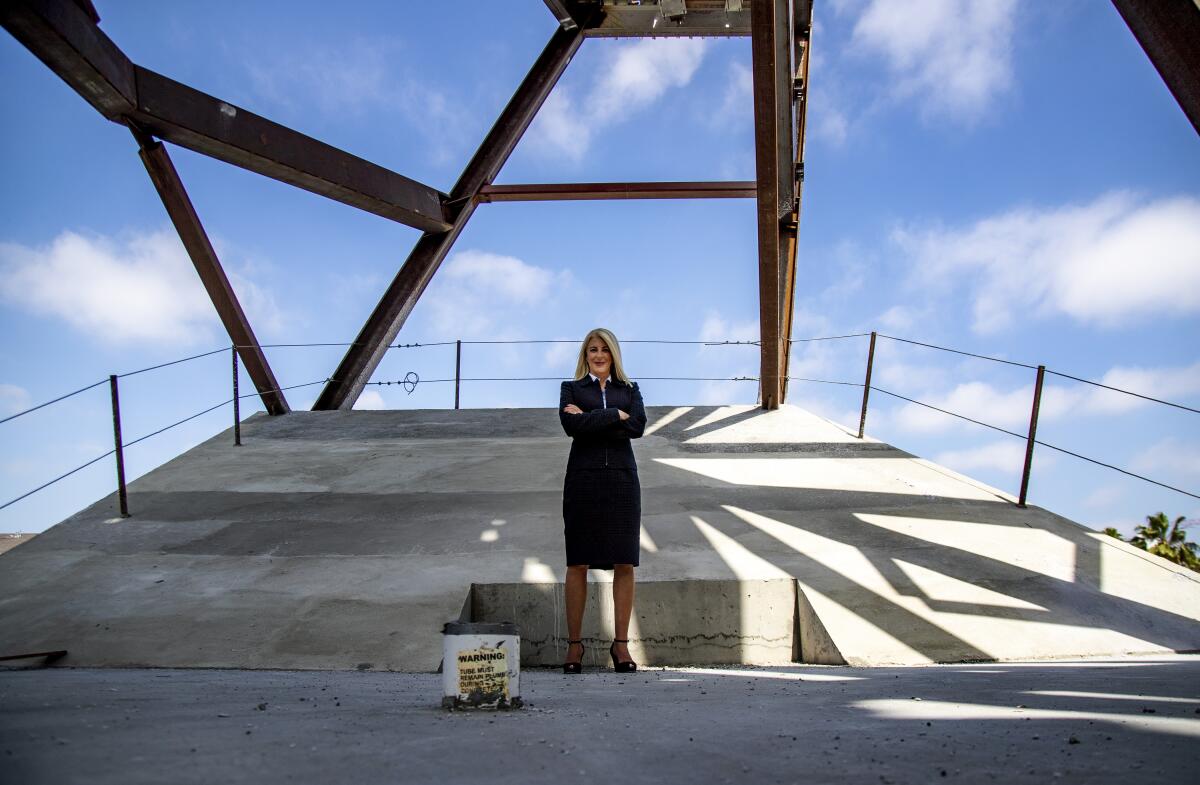
During the dark and quiet days of pandemic shutdown, the new Orange County Museum of Art building, under construction at Segerstrom Center for the Arts in Costa Mesa, slowly but steadily took shape and is now about three-quarters complete.
The $93 million building by Morphosis Architects, the 80-person studio founded by Pritzker Prize-winning architect Thom Mayne, was designed to be many things: the new home for a contemporary art museum — more than a decade in the works — that will nearly double exhibition space and raise the institution’s profile, for one. A community gathering space in sprawling and disjointed Orange County, with a grand staircase that Mayne modeled after New York’s Metropolitan Museum of Art steps, for another. A fluid, light-filled structure that will be architecturally and programmatically simpatico with the five other arts entities on Segerstrom’s campus — “a good neighbor,” as new Director Heidi Zuckerman put it on a recent construction site tour.
For the record:
9:21 a.m. June 14, 2021An earlier version of this article misspelled curator Essence Harden’s last name as Harding.
What the museum was not designed to be: an architectural response to a global pandemic, configured for an art audience who may still be wary of indoor cultural experiences.
But that is how OCMA is emerging, unintentionally. The museum, which plans to open Oct. 8, 2022, may be an ideal post-COVID-19 art destination, says Zuckerman, who assumed her post in February.
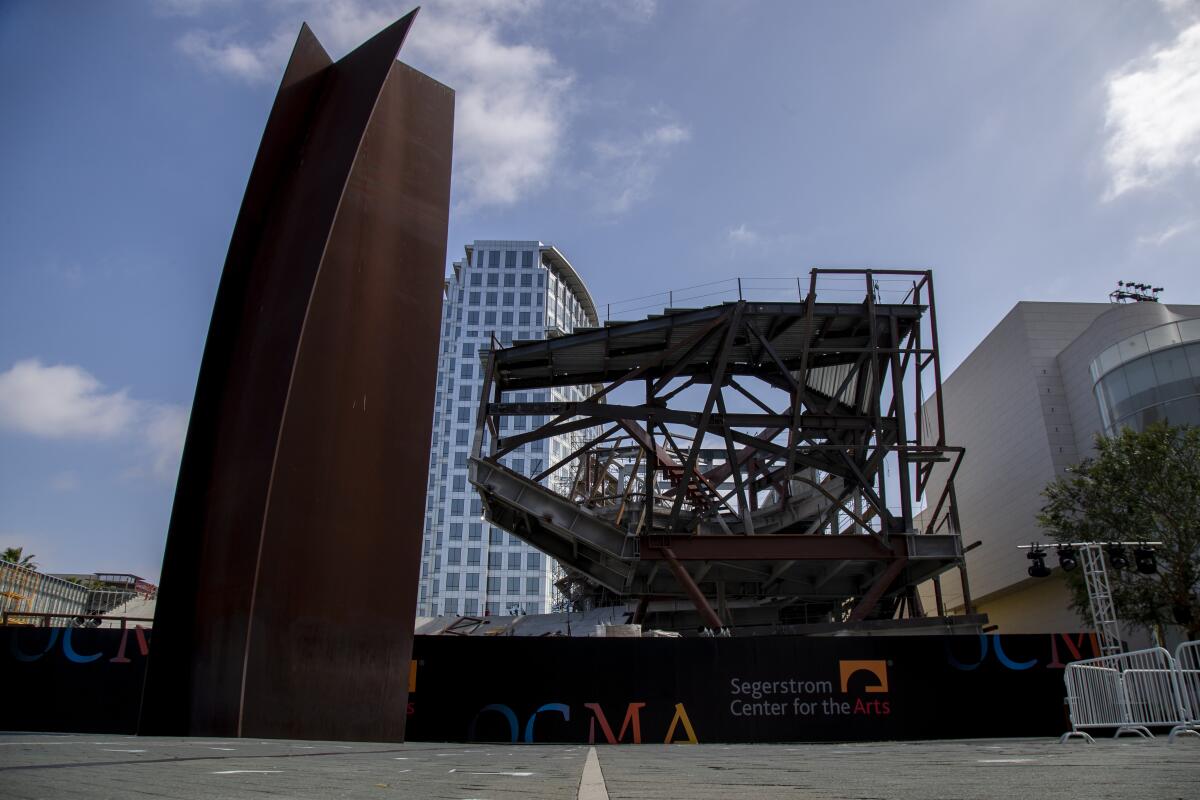
Mayne’s design is indoor-outdoor, with skylights, retractable walls, more than 10,000 square feet of green space and an outdoor plaza accommodating up to 1,000 people for events. Not to mention the front steps, where audiences will sit for performances, artist talks and other happenings. Zuckerman, a California native and avid hiker, intends to display artworks, including paintings, outside. The world changed as OCMA was rising, and now the museum is on point for the times, if inadvertently.
“During COVID, there was this idea that people may never go back inside together again,” Zuckerman says. “I don’t think that’s going to happen now. But institutions that have the ability to allow people to be in this kind of hybrid indoor-outdoor space, I think, will be the most successful over time. It’s about what a museum can be for the 21st century.”
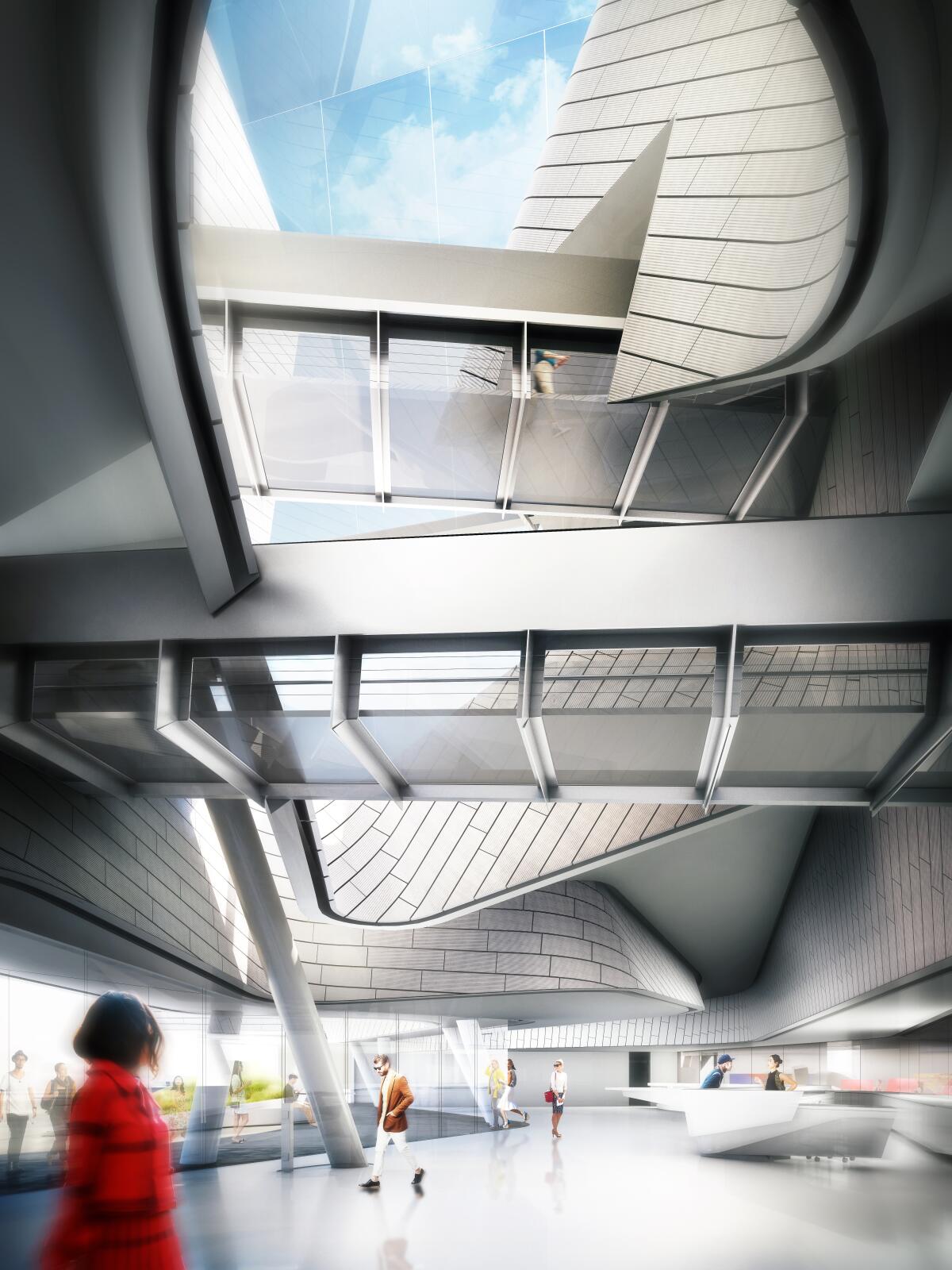
The pandemic was challenging for all cultural institutions, but OCMA took less of a hit than many museums. After closing its longtime Newport Beach location in June 2018, it had been showing exhibitions in a temporary space, a former Room & Board furniture store in South Coast Plaza Village. During the pandemic, OCMAExpand opened for two months in the fall but then closed permanently. With a small full-time staff and light overhead, the museum rode out the pandemic relatively unscathed, avoiding staff layoffs and furloughs. Its $16 million endowment grew 20% during 2020.
“The institution was living within its means and was able to weather the storm,” Zuckerman says.
But the 53,000-square-foot building project — positioned next to the Renée and Henry Segerstrom Concert Hall and seen as the final element of Segerstrom’s cultural campus — was not immune to the challenges of 2020. Construction slowed as smaller crews worked while socially distanced, and the pandemic brought manufacturing delays. Fundraising, steered throughout the pandemic by former director Todd D. Smith — before his departure in August — and interim director Sarah Jesse, slowed to a crawl. The museum pushed its opening date from 2021 to mid-2022 and then fall 2022.
Zuckerman, formerly director of the Aspen Art Museum in Colorado, oversaw the creation of a $45-million building there designed by Shigeru Ban that opened in 2014. Upon her arrival at OCMA, she accelerated the project, expediting construction and raising more than $9.4 million in her first eight weeks. The building campaign stands at more than $60 million.
Zuckerman made operational changes to the building as well — mostly tweaks related to security, staff offices or visitor experience. She added five board trustees and nailed down the new opening date. She also began acquiring art, beginning with an “eight-talisman installation” by L.A. artist Sarah Cain.
“Eight is the number of infinite abundance,” Zuckerman says. “They’re painted dollar bills suspended from the ceiling with fishing wire. The backs are silver or gold and the fronts are vibrant [colors]. I tell our team, ‘Walk under them, tell them what you need!’”
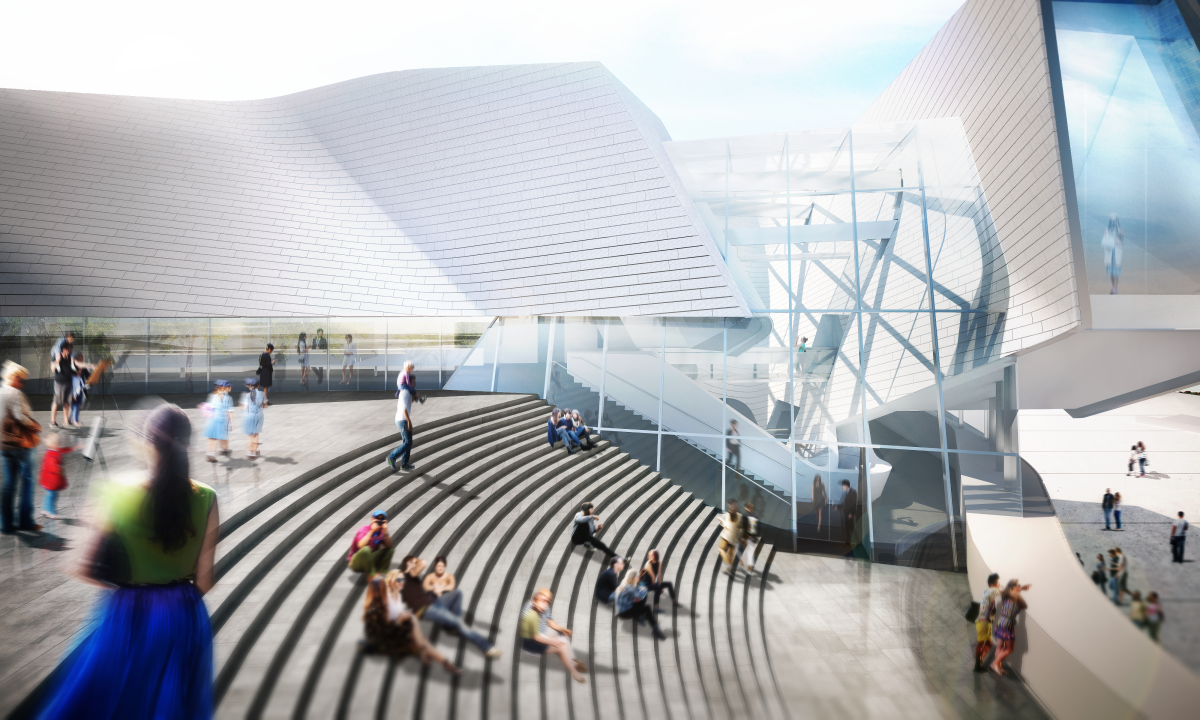
If there’s an overall vision for the museum beyond maximizing Mayne’s indoor-outdoor design for a post-COVID world, Zuckerman says, it’s “looking back to move forward.”
In a nod to OCMA’s history, the opening special exhibition will be a resurrection of the museum’s long-running California Biennial, which began in 1984 and continued, nearly uninterrupted, until 2010. Zuckerman hired a three-generation curatorial team led by Elizabeth Armstrong, who has curated the biennial three times. She’ll be joined by Gilbert Vicario, chief curator at the Phoenix Art Museum, and independent curator Essence Harden.
The biennial will be “expansive,” Zuckerman says, incorporating artists throughout California at various stages of their careers. The work will include painting, sculpture, photography and video as well as architecture, design, music and fashion.
“I’ve always associated this institution with the California Biennial,” Zuckerman says. “It was a destination exhibition, on the circuit of people who would travel to see art. And I think some of the most interesting ones were curated by Liz Armstrong.”
With 25,000 square feet of exhibition space to work with, Zuckerman plans to switch up displays of the permanent collection, which consists of more than 4,500 works produced by California and Pacific Rim artists. It highlights movements such as Light and Space, Pop art, Minimalism, California conceptualism, and early and midcentury modernism. With deep holdings by artists such as John Baldessari, Charles Ray, Chris Burden, Vija Celmins, Jay DeFeo, Catherine Opie and Ed Ruscha — dating back to early in their careers — the museum is poised to present both thematic exhibitions and robust solo shows.
“There’s this old idea that permanent collection galleries were staid and never changed,” Zuckerman says, “and now museums can be more dynamic in how they’re using their assets. I think that’s how more museums will function in the future.”
Zuckerman, who hosts the independently produced podcast “Conversations About Art” and who wrote the “Conversations With Artists” book series, will curate the opening reinstallation of the permanent collection, though it’s too soon to provide details, she says.
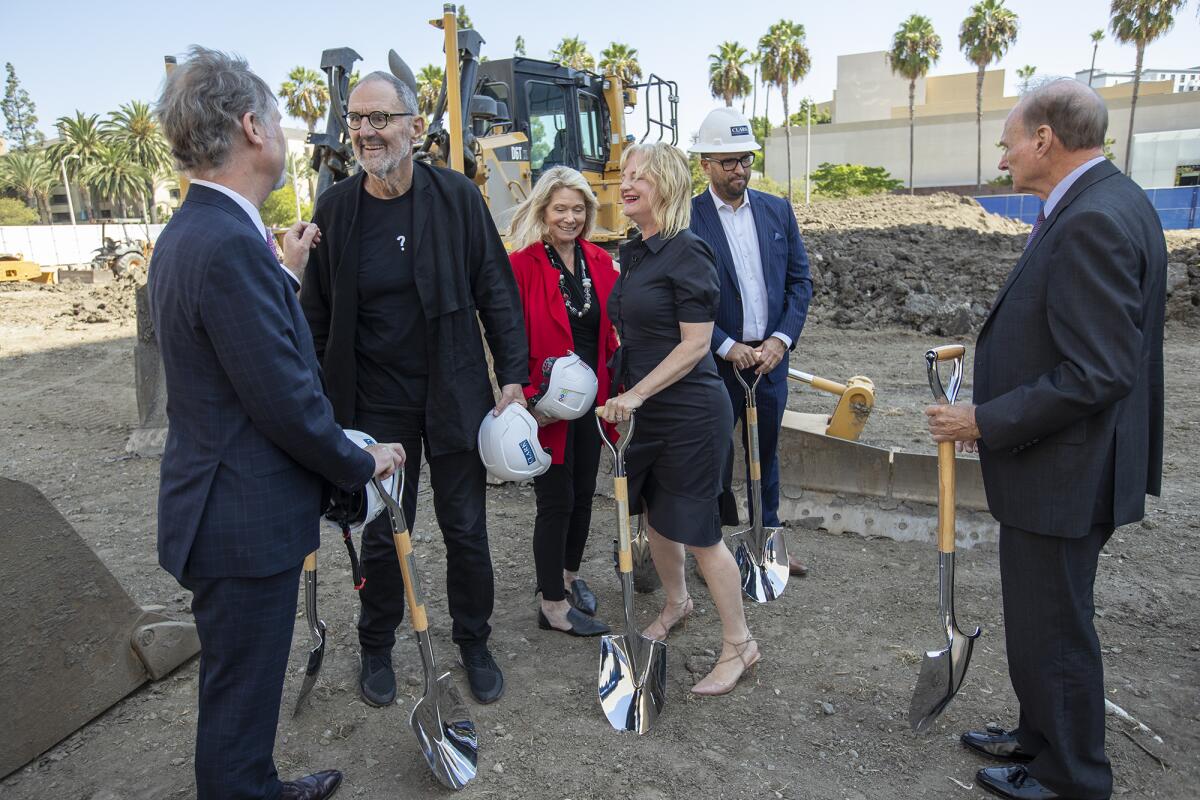
Meantime, Zuckerman is working on “right-sizing” the museum. That includes growing the staff of 10 to about 40 people, accelerating fundraising, building the board and increasing acquisitions. She also has launched a $25 million endowment campaign. Zuckerman expects the museum’s $3 million annual operating budget will grow to $9.5 million.
Another goal: getting admission underwritten so the entry to the museum will be free.
“I believe access to art is a basic human right, it’s not a privilege,” Zuckerman says. “So our mission and vision is to connect as many people to art and artists as possible.”
Construction is on track for May 2022 completion, but OCMA won’t open until the fall so there’s time to iron out kinks and to provide a pause after the Museum of Contemporary Art San Diego premieres its expansion in April, Zuckerman says.
OCMA’s opening will be a 24-hour-long event that will include tours of the permanent collection by past curators and directors as well as live music, middle-of-the-night movie screenings and sunrise yoga.
Zuckerman’s hope for the evening — for the museum itself — is that it be “dynamic and organic and innovative and expressive and just hyper-present,” she says.
“Orange County doesn’t have a downtown, it doesn’t have a civic center. So the idea of our project is to become the anchor of Orange County. We can use art and culture as the connector for the community.”
It’s something that’s especially needed right now, Zuckerman says.
“One of the things that COVID highlighted was: If we don’t make efforts to be with other people, then we get isolated. I don’t think humans like to be on their own. We need each other, want each other, we do better together. And this space is really designed for that — to watch culture but also to watch other people.”
More to Read
The biggest entertainment stories
Get our big stories about Hollywood, film, television, music, arts, culture and more right in your inbox as soon as they publish.
You may occasionally receive promotional content from the Los Angeles Times.











